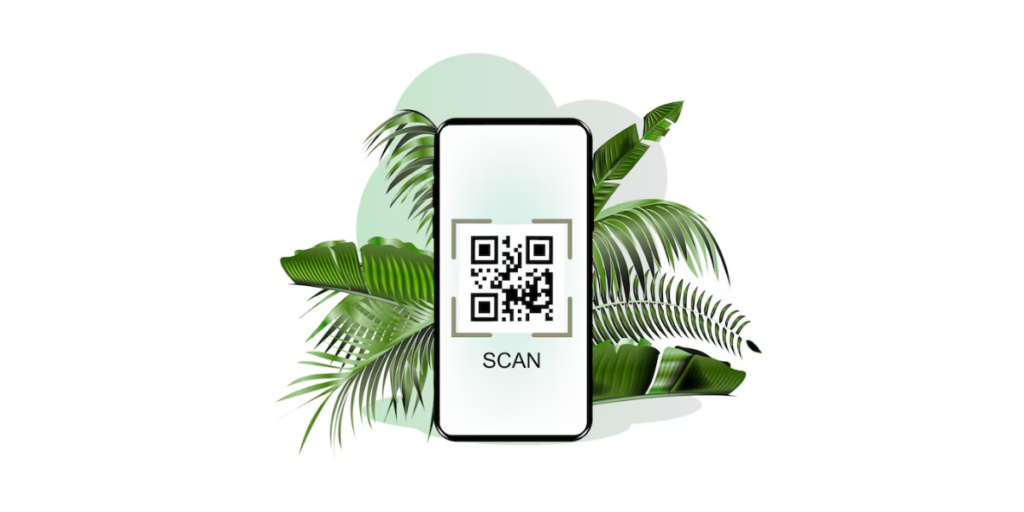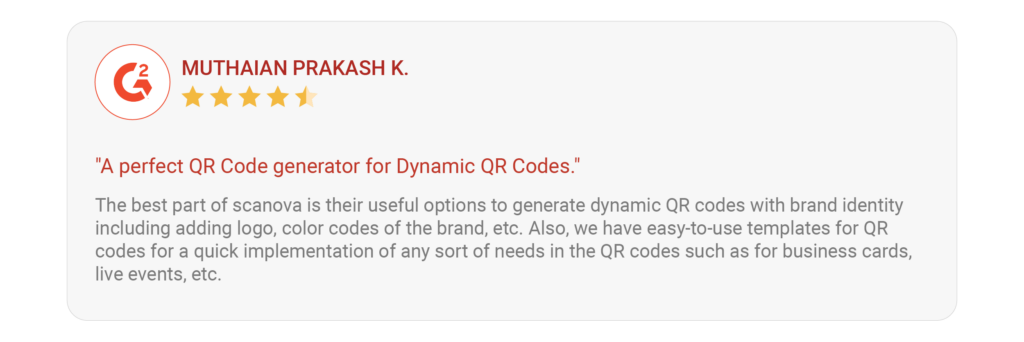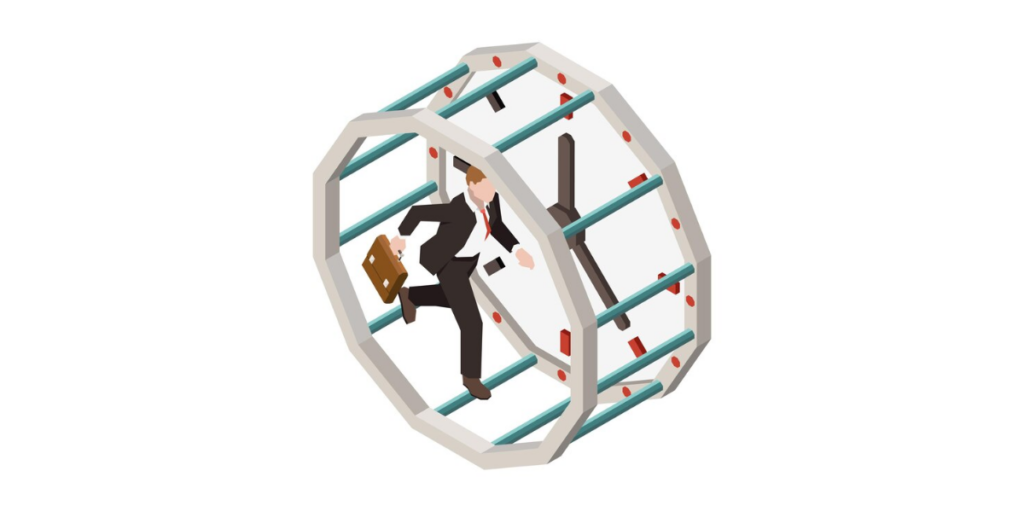Recycling QR Code: A Complete Guide

In today’s world, where environmental concerns are at the forefront of global discussions, innovative solutions are imperative to tackle sustainability challenges.
One such solution lies in the power of recycling QR Codes. It is an emerging technology that can revolutionize how we manage waste and promote recycling.
The concept of recycling QR Codes involves embedding these codes onto products, packaging, or recycling bins to facilitate and incentivize recycling efforts.
Let’s take a deep dive and learn more about it.
A. How does a recycling QR Code work

1. Enhanced recycling infrastructure
Recycling QRs can be placed on various items, from plastic bottles to electronic devices. This enables consumers to easily identify recyclable materials and access relevant recycling information. It also promotes proper disposal practices and reduces contamination in recycling streams.
2. Educational tool
QRs can link to informative content about recycling guidelines, waste reduction tips, and the environmental impact of different materials. Consumers can make more informed decisions and contribute to sustainable practices.
3. Incentivizing recycling
QRs can be integrated into recycling programs that offer rewards or incentives for recycling participation. For example, scanning a QR Code on a food container could earn consumers loyalty points, discounts, or charitable donations, fostering a culture of recycling and responsible consumption.
Brands that trust us:

4. Supply chain transparency
QRs can also be used to track the lifecycle of products, from manufacturing to disposal, providing transparency into their environmental footprint. This allows consumers to choose products from companies committed to sustainability and encourages manufacturers to adopt eco-friendly practices.
5. Data analytics for improvement
By collecting data from QR scans, municipalities, businesses, and organizations can analyze recycling behaviors, identify trends, and optimize recycling initiatives. This data-driven approach enables continuous improvement and targeted interventions to enhance recycling rates and minimize waste.
B. How are recycling QR Codes making a difference

QRs enhance communication, promote awareness, and streamline processes throughout the recycling ecosystem.
Here’s how QRs are contributing to a more sustainable approach to recycling:
1. Improving consumer engagement
QRs on product packaging or recycling bins provide consumers with instant access to information about recycling instructions, and more. This empowers individuals to make informed decisions about recycling and encourages them to participate in recycling programs.
2. Facilitating sorting and processing
QRs can be used to label recyclable materials with essential information, such as material type, composition, and recyclability. This facilitates automated sorting processes in recycling facilities.
3. Enabling rewards and incentives
Recycling programs can leverage QRs to offer rewards, incentives, or discounts to consumers who participate in recycling activities.
By scanning QRs on recyclable items, individuals can earn loyalty points, redeem coupons, or contribute to charitable causes, encouraging greater participation in recycling initiatives.
Read what our customers have to say about Scanova:

4. Streamlining data collection and analysis
QRs facilitate data collection on recycling behaviors, including the frequency of recycling, types of materials recycled, and geographic distribution of recycling activities. This data can be analyzed to identify trends, assess the effectiveness of recycling programs, and allocate resources more efficiently.
5. Encouraging innovation and collaboration
The adoption of QRs in recycling fosters innovation and collaboration among stakeholders, including governments, businesses, technology providers, and consumers. By working together to develop standardized QR Code systems, implement best practices, and share data, stakeholders can accelerate progress toward a more sustainable recycling ecosystem.
C. How to harness QR Codes for efficient recycling

Harnessing QRs for efficient recycling involves implementing a comprehensive strategy that integrates technology, education, and incentives to streamline recycling processes and encourage participation.
Here’s a step-by-step guide on how to leverage QR Codes for efficient recycling:
1. Standardize QR Code systems
Develop standardized QR systems for labeling recyclable materials, product packaging, and recycling bins. Ensure consistency in QR formats, encoding schemes, and information structure to facilitate universal scanning and interpretation.
2. Labeling recyclable items
Embed QR Codes on product packaging or directly onto recyclable materials to provide essential information, such as material type, recycling instructions, and environmental impact. Include instructions on how to scan the QR Code and access recycling-related content.
3. QR Code recycling bins
Install recycling bins equipped with QR Codes at public locations, workplaces, and residential areas. These QR Codes can link to recycling guidelines, bin-specific instructions, and information on nearby recycling facilities or collection points.
4. Incentivize recycling
Implement recycling reward programs that use QR Codes to track recycling activities and provide incentives to participants. Offer rewards such as loyalty points, discounts, coupons, or donations to charitable causes for scanning QR Codes on recyclable items or participating in recycling events.
5. Mobile apps
Develop mobile applications that enable users to scan QR Codes on recyclable items, access recycling information, track their recycling activities, and redeem rewards. Incorporate features such as barcode scanning, geolocation services, and personalized rewards to enhance user engagement.
6. Data collection and analysis
Collect data from QR scans to analyze recycling behaviors, monitor recycling rates, and identify areas for improvement. Use analytics tools to generate insights, measure program effectiveness, and optimize recycling initiatives based on real-time feedback.
Read how QR Codes can make recycling a lot easier
7. Partnerships and collaboration
Collaborate with government agencies, businesses, nonprofit organizations, and technology providers to promote QR Code-enabled recycling initiatives. Pool resources, share best practices, and leverage collective expertise to maximize impact and reach a broader audience.
8. Public awareness campaigns
Launch public awareness campaigns to promote QR-enabled recycling initiatives through traditional media, social media, and community outreach efforts. Educate the public about the benefits of recycling, the role of QR Codes in recycling, and how to participate in recycling programs effectively.
9. Continuous improvement
Continuously evaluate and refine QR Code-enabled recycling programs based on feedback, performance metrics, and evolving recycling trends. Incorporate user feedback, iterate on program features, and adapt strategies to meet changing needs and preferences.


D. How to create a free recycling QR Code

1. Open your preferred browser and go to scanova.io – The Gold Standard for everything QR
2. Click on the Create Your Free QR Code button from the homepage
3. From the next page that follows, select your preferred QR category (for demo purposes, we’ll choose Website URL QR Code
4. Enter your website’s URL where you want your end users to go to
5. Run a test scan. Now, from the right-hand panel, you can tap on ‘Download QR Code’
To create a dynamic QR Code, read this guide!
E. Best practices: Recycling QR Code

Implementing recycling QRs effectively requires adherence to best practices to ensure maximum impact and user engagement.
Read this section for the best practices for recycling QR Codes:
1. Clarity and simplicity
Ensure QRs are easy to scan and understand. Use clear labeling and concise instructions to guide users on how to scan the code and access relevant information.
2. Mobile compatibility
Optimize QR content for mobile devices to ensure compatibility across various smartphone models and operating systems. Test your QRs on different devices to verify functionality and readability.
3. Relevant content
Link QRs to relevant and informative content, such as recycling guidelines, disposal instructions, or educational resources. Also, provide actionable information that helps users make informed recycling decisions.
4. Localized information
Tailor your QR content to reflect local recycling practices, regulations, and resources. Include information on nearby recycling facilities, collection schedules, and accepted materials to enhance relevance and usefulness.
5. Visual placement
Strategically place QRs on product packaging, recycling bins, or promotional materials to maximize visibility and accessibility. Use prominent placement and clear signage to attract attention and encourage scanning.
6. Incentives and rewards
Offer incentives or rewards for scanning QRs to encourage participation and engagement. Provide tangible benefits, such as discounts, coupons, or loyalty points, to incentivize recycling behavior.
7. Feedback mechanism
Incorporate a feedback mechanism to gather user input and suggestions for improving QR-enabled recycling initiatives. Encourage users to provide feedback through surveys, polls, or contact channels.
8. Data privacy and security
Prioritize data privacy and security when collecting and storing user information through QR scans. Implement robust security measures and adhere to relevant data protection regulations to safeguard user privacy.
9. Promotion and marketing
Promote QR-enabled recycling initiatives through targeted marketing campaigns, social media outreach, and community engagement efforts. Raise awareness about the benefits of recycling and the role of QRs in facilitating recycling practices.
10. Continuous monitoring and optimization
Monitor QR performance metrics, such as scan rates, user engagement, and redemption rates, to assess effectiveness and identify areas for improvement. Continuously optimize QR content, placement, and incentives based on feedback and analytics insights.
F. FAQs: Recycling QR Code

1. What is a recycling QR Code?
A recycling QR Code is used to provide information and guidance related to recycling. These codes are typically found on product packaging, recycling bins, or promotional materials.
2. How do I scan a recycling QR Code?
To scan a recycling QR Code, open the camera app on your smartphone and point it at the QR. Your device should automatically recognize the recycling QR Code and prompt you to open the linked content.
3. What information can I find by scanning a recycling QR Code?
Scanning a recycling QR Code can provide you with various information, including recycling guidelines, disposal instructions, educational resources, and nearby recycling facilities.
4. Why should I scan recycling QR Code?
Scanning a recycling QR Code can help you access valuable information about recycling practices, make informed decisions about waste disposal, and contribute to environmental conservation efforts.
5. Is a recycling QR Code compatible with all smartphones?
Yes, recycling QR Codes are compatible with most smartphones equipped with a camera and QR scanning capabilities. Ensure that your device’s camera is functional and that you have a QR Code scanning app installed if needed.
6. Do I need internet access to scan a recycling QR Code?
Yes, you will need internet access to scan a recycling QR and access the linked content. The QR Code typically directs you to a website or online resource where you can find relevant information.
7. Can I recycle the materials used to make QR Codes?
QRs are typically printed on paper or plastic materials, both of which are recyclable. However, it’s essential to check your local recycling guidelines to ensure that these materials are accepted in your recycling program.
8. Are there any incentives for scanning recycling QR Codes?
Some recycling programs may offer incentives or rewards for scanning QRs, such as discounts, coupons, or loyalty points. Check with your local recycling program or the product manufacturer for any available incentives.
Summing Up
The advent of recycling QRs marks a significant step forward in our collective efforts toward a more sustainable future.
From providing easy access to recycling guidelines and educational resources to incentivizing participation through rewards and incentives, recycling QR Codes empower individuals to make informed choices and actively contribute to a healthier planet.
If you’re still reading, you’ve learned everything about recycling QR Code. If you have any questions, let us know in the comments.
Always go for a reputable QR Code service provider for your business and marketing needs

